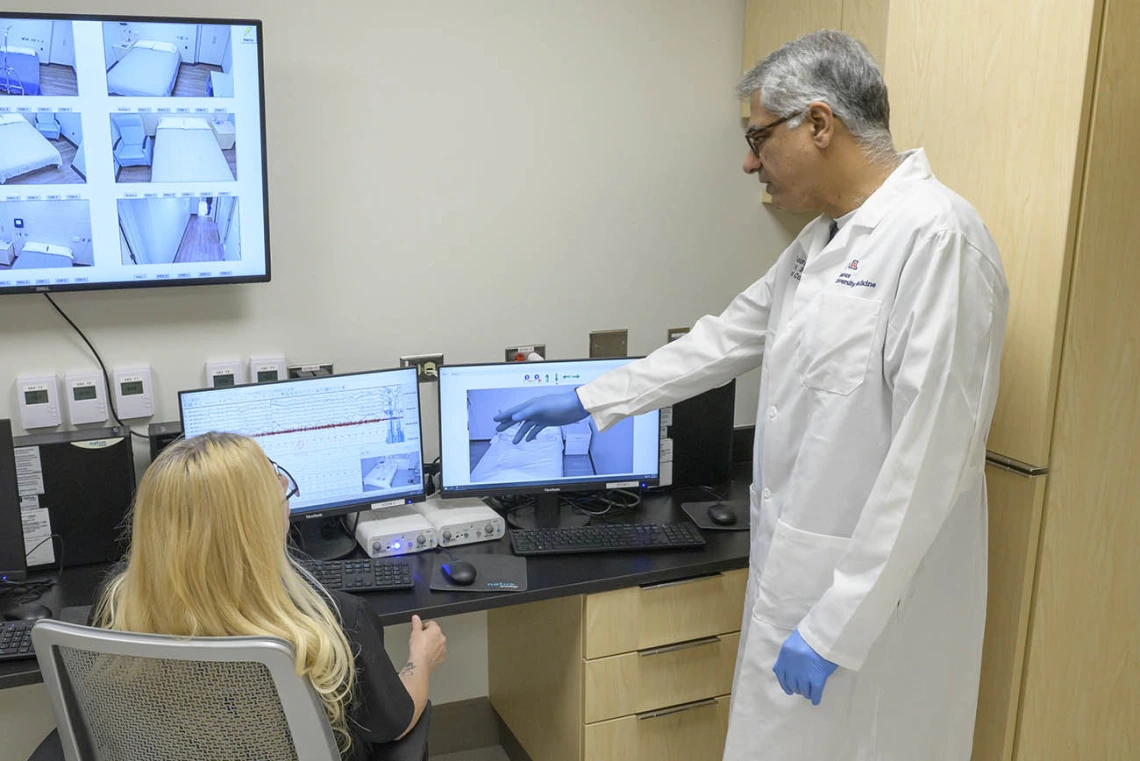Center for Sleep, Circadian and Neuroscience Research opens new facility
Tours of the Center for Sleep, Circadian and Neuroscience Research’s new location will be offered during a ribbon-cutting and open house May 15.

- What: Center for Sleep, Circadian and Neuroscience Research Open House
- When: Monday, May 15, 4 p.m.
- Where: Arizona Health Sciences Center plaza and room 0418, 1501 N. Campbell Ave.
The Center for Sleep, Circadian and Neuroscience Research is hosting an open house and ribbon cutting at 4 p.m. Monday, May 15. The new facility is located in the basement of the Arizona Health Sciences Center building at 1501 N. Campbell Avenue.
Previously, University of Arizona researchers conducted sleep studies in a leased facility located above a Tucson bar and grill. The new facility, built using a $5 million construction grant from the National Institutes of Health Office of the Director, will give investigators access to state-of-the-art technology to conduct innovative sleep and circadian rhythm research.
The new facility offers a highly controlled environment aimed at enhancing human research involving sleep and circadian rhythms to improve understanding of disease processes involving multiple biological systems.
“The University of Arizona Health Sciences has studied sleep for more than four decades, during which time our researchers have made pioneering advances in understanding the connections between sleep and cardiovascular disease, neurocognition and behavioral interventions,” said Michael D. Dake, MD, senior vice president for the University of Arizona Health Sciences. “The Center for Sleep, Circadian and Neuroscience Research’s new location and facilities will allow us to find new solutions to critical sleep issues, improving health and human potential for all.”
The new state-of-the-art facility will allow for continuous monitoring of the environment of each room using sensors for light, noise, inhaled gases, and room, core body and skin temperatures that will be collected and recorded in a time synchronous manner with the sleep and circadian rhythms in computerized software. The facility enables enables sophisticated short- and long-term experimentation that could simulate conditions in the International Space Station or future space missions.
Contact
Phil Villarreal
UArizona Health Sciences
520-403-1986
pvillarreal@arizona.edu

